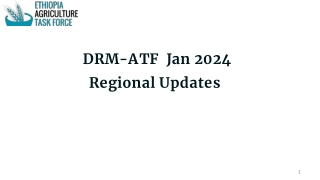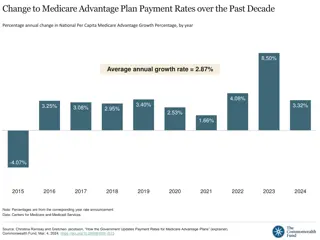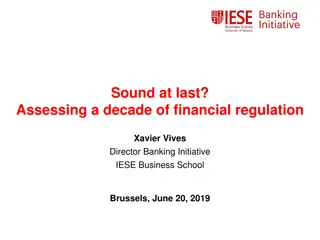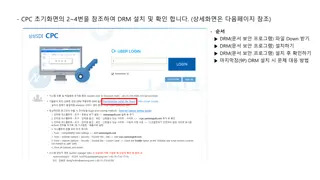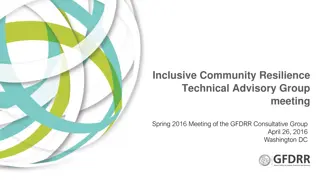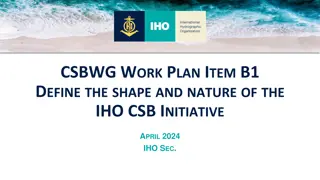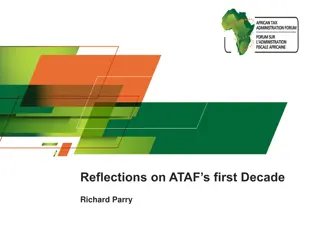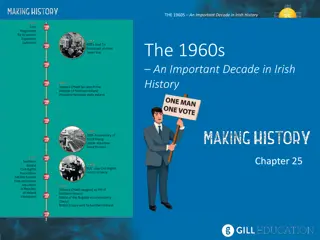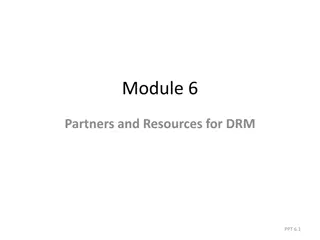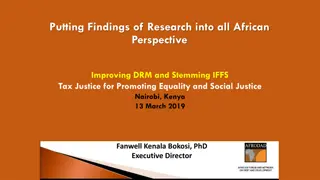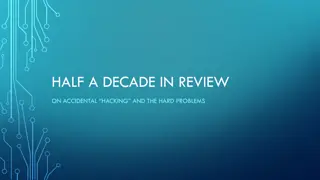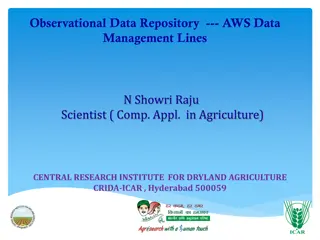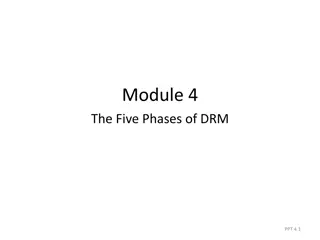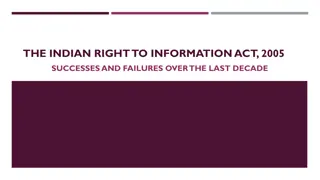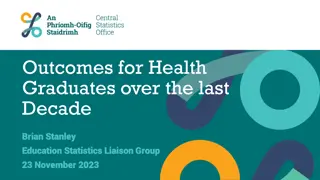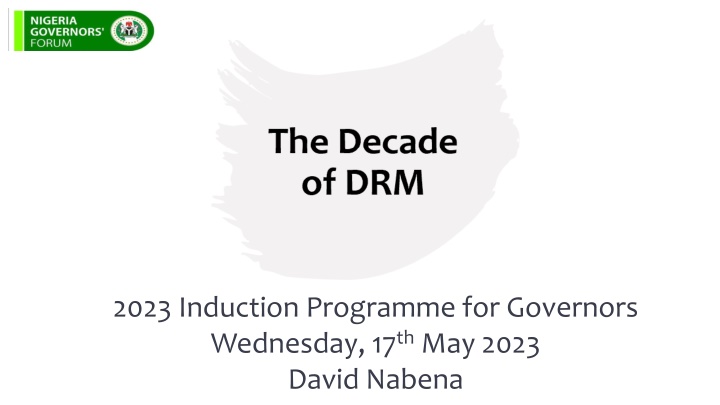
Repositioning State Economies for Sustainable Growth
Explore the key initiatives driving economic reforms in state-level governance, focusing on tax reforms, industrial transformation, and poverty alleviation strategies in low-income economies like Nigeria. The discussion emphasizes the importance of tax administration, regional cooperation for investments, and public financial management in fostering economic development and private sector growth.
Download Presentation

Please find below an Image/Link to download the presentation.
The content on the website is provided AS IS for your information and personal use only. It may not be sold, licensed, or shared on other websites without obtaining consent from the author. If you encounter any issues during the download, it is possible that the publisher has removed the file from their server.
You are allowed to download the files provided on this website for personal or commercial use, subject to the condition that they are used lawfully. All files are the property of their respective owners.
The content on the website is provided AS IS for your information and personal use only. It may not be sold, licensed, or shared on other websites without obtaining consent from the author.
E N D
Presentation Transcript
2023 Induction Programme for Governors Wednesday, 17th May 2023 David Nabena
Increasing role of DRM Tax reform at the State-level received significant attention in the last decade, spurred by the mid-2014 2016 oil crisis which saw government revenues (% of GDP) fall by nearly half from 11% in 2014 to 6% in 2016. Inflection point for tax reforms 2,000 120 111.63 111.26 1,800 108.56 1,774 100.93 Brent Spot Price FOB, Dollars per Barrel 100 1,666 98.97 1,600 1,400 80 IGR in Billion Naira 1,311 1,307 The sharp revenue slump during the period revealed a previously overlooked risk oil receipts were more volatile than oil prices. 1,220 71.34 1,200 70.86 64.3 1,000 60 936 54.13 52.32 821 43.64 800 708 41.96 687 40 662 600 584 What tax reforms mean for States 487 400 20 200 1. Better tax administration practices - 0 2. Increased funding for government administration, infrastructure provision, and social service delivery 2019 2017 2018 2013 2014 2015 2016 2011 2012 2020 2022 2021 IGR (in Billion Naira) Oil Price 3. Fair and competitive business environment for private sector growth 4. Enhanced state-society relations 5. Reduced dependence on aid and federation revenues.
Can low income economies generate high domestic revenues? Multidimensional Poverty in Nigeria, headcount (%) Tertiarisation of the Nigerian economy Industrial transformation Low productivity, low income, high unemployment, high poverty ..
Repositioning State economies 1. An aggressive manufacturing agenda will reduce the burden on high unemployment and poverty by creating a sustainable pool of high-skilled, high-paying jobs. Targeted infrastructure, skills development, harmonising regulations, making quality connections with the private sector, and preparing for a more digital future are important conditions to accelerate this process. Special economic zones (SEZs) such as free-trade zones, export-processing zones, industrial parks, economic and technology-development zones, high-tech zones, science and technology parks, free ports, enterprise zones have become the most common vehicles to deliver a competitive advantage. 2.Attract large scale investments through regional cooperation for projects, policies, and regulations. Integration creates a business case for large-scale investments because it provides a predictable risk profile for a large section of the country rather than dealing with multiple jurisdictions, with multiple regulations and supply chain arrangements. 3.Public financial management (PFM) remains central to the steerage of development and the provision of public and private services. In this bucket, an effective tax reform can anchor the government s long-term strategy to finance development, support private sector growth and strengthen public legitimacy.
NGFs DRM Programme, 2017 - 2023 Capacity Building | Trust Building Services | Digital Transformation 7. The Intelligent Tax Authority (TITA) initiative - a digitalised end-to-end taxpayer management and revenue administration system. 8. eLMS - online training platform for State government officials. 9. EoI will help catalyse the development of a rules engine for information exchange amongst States. 1. Research independent and collaborative research to generate evidence for advocacy and action. 2. Data creation, analysis and sharing through an IGR Dashboard we assess the tax environment of all States. 3. Capacity building the HelpDesk provides demand-based advice and technical support to States through direct technical assistance, workshops, and knowledge transfer. 4. High-level advocacy (engagement with Governors, JTB, SIRS, FGN, Development Partners etc) 5. Tax for Service - in which informal sector workers pay taxes in exchange for free minimum healthcare is a policy innovation that rides on the capacity to raise revenues from the informal sector for a core domain of human development. 6. Public finance database Nigeria s first open source State-level public finance database Risks of taxation, 2019 Impact of COVID lockdown on state taxes, 2020 Key conditions for effective tax reforms: Poor alignment across revenue 18% 0% ACTION PAYE Direct Road Taxes Other Taxes MDA Reveneus Lack of human, financial and 45% -10% -7.8% Administrative & financial autonomy for tax authorities. Simplified, harmonised and consolidated revenue code Effective service delivery to build public trust and taxpayer compliance. Whole-of-government approach to tax reforms. Digital transformation of tax administration and government processes. Assessment Absence of autonomy for tax 38% -20% Weak PFM system 18% -30% POLICY -28.8% -29.2% Low government interest to raise 18% -40% Dissatisfaction with government 64% -50% -45.1% LEGITIMACY Poverty 15% -60% -57.8% -58.5% -60.1% -61.9% -62.7% Low public trust 70% -70% -68.5% Weak stakeholder engagement 15% -80% Year-on-Year decline Month-on-Month decline 0% 20% 40% 60% 80% 100%
DRM in Figures Total IGR for the 36 States, 2011 - 2022 States Capacity to Administer Taxes, 2017 - 2022 IGR (in Billion Naira) 2,000 80.00% 1,774 1,800 70.00% 1,666 66.80% 65.80% 1,600 62% 61.90% 60.80% 60.00% 1,400 1,311 1,307 1,220 48.74% 50.00% 1,200 1,000 936 40.00% 821 800 708 687 30.00% 662 584 600 487 20.00% 400 10.00% 200 0.00% - 2017 2018 2019 2020 2021 2022 2011 2012 2013 2014 2015 2016 2017 2018 2019 2020 2021 2022
MODEL MONITOR & LEARN RESEARCH INTERVENE Tax for Service Digital DRM

